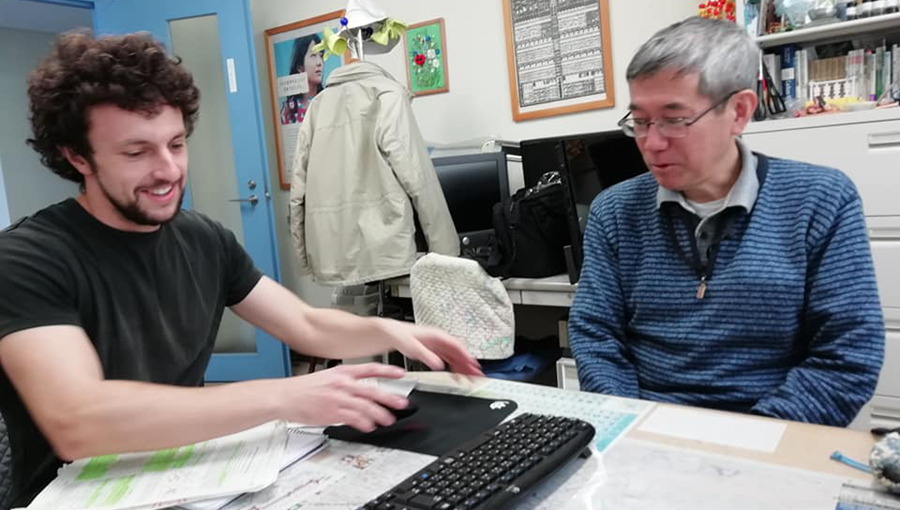Spotlight: Marc Vila, ICN2, Graphene Connects Different Cultures
Marc Vila, PhD student at Graphene Flagship partner ICN2 (left), speaks to us about his research in spintronics using graphene
Marc Villa is a doctoral student at the Catalan Institute of Nanoscience and Nanotechnology (ICN2) studying Theoretical and Computational Nanoscience. He spoke with us about his work and his experience working in the Graphene Flagship.
Can you tell us a little bit about your research?
My main research topic at Graphene Flagship partner ICN2 is spintronics in graphene and related materials. I do numerical simulations with quantum mechanical models to try and find explanations to the newest experiments. I simulate the devices used to probe spintronic properties to extract microscopic information of how they work. Such detailed information is really challenging to study experimentally, but my results reveal new insights and help guide future experiments.
What applications can your research find in real life?
Spintronics aims to replace part of the future electronic devices as a solution of the demanding evolution nowadays required for electronic components. Combining graphene and related materials with spintronics is not only interesting because of the outstanding properties of the materials –graphene, for example is an excellent spin conductor–, but also because the technological processes to integrate graphene and related materials in devices are rapidly growing. This makes us dream of very complex architectures in the future years.
What is your favourite graphene fun fact?
The fact that one single gram of graphene can cover an entire football field!
Tell us something positive about being involved in a Graphene Flagship international exchange programme.
I find this kind of experiences overall very positive. Firstly, I had to leave my comfort zone by starting a new project unrelated to spintronics, which is my field of expertise. During my stay in Japan, I had to get used to working in a totally different environment, both professionally and culturally. You need to talk about this completely new research topic with people –usually experts in the field– you are not used to discuss with, which is specially challenging at the beginning of the international exchange. Thanks to this Graphene Flagship internship, I have grown as a scientist and I have also learnt new ways to do research, which I will surely incorporate in my day-to-day routines from now on.
Your collaboration with Japan will soon yield a paper – could you tell us a little bit about this?
The so-called Haldane model can be considered as the prelude of the discovery of topological insulators in 2005 with graphene. In our case, we have found that with only a minor modification to the Haldane model, different optical properties can appear simultaneously and can be easily modulated, envisioning in this way applications to the fields of photonics and valleytronics. Furthermore, such model is predicted to exist in graphene and related materials like transition metal dichalcogenides, which makes the results even more appealing.
Do you plan to go to Graphene Study? If yes, tell us about the importance of these kind of events for the career development of a young researcher?
Yes, I will definitely go to Graphene Study 2019 in Obergurgl. Being able to participate in these multidisciplinary events at such early stage is a very good opportunity. One benefits, of course, from the scientific content presented. But perhaps more importantly, you have a unique opportunity to talk directly with leading experts in the field, allowing you to build a strong international network that will surely become valuable in the future.
Would you recommend the exchange programmes, and graphene study to other young researchers and colleagues?
Of course! Research is not only going every day to your desk or laboratory and publish some results. This is part of the job, but the best ideas and opportunities arise when you mix with other researchers, especially when they come from different fields. Just as an example, in my stay in Japan, because the calculations I have done are not directly related to my PhD project, I had to revise some basic background on the field. And this turned out to be quite useful to understand one problem I kept encountering within my PhD project!

Marc Vila, PhD student at Graphene Flagship partner ICN2 (left) with Prof. Riichiro Saito from Tohoku University in Japan.




